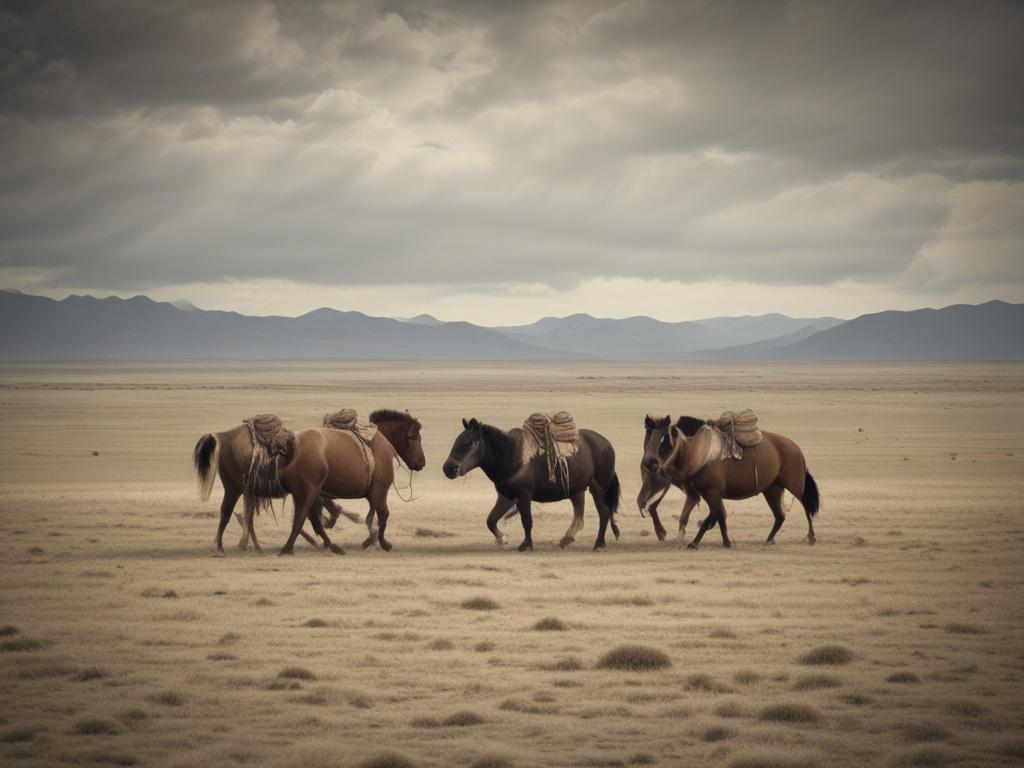

Southern Mongolia stands as a testament to the intricate weave of ancient civilizations and vibrant cultural traditions. As you explore the deep-rooted history of Southern Mongolia, you will encounter a landscape rich with stories, where nomadic tribes and historic empires left their indelible marks. This region has served as a crossroads of cultures, where the influence of Mongolian heritage blends seamlessly with the echoes of its diverse past, providing a unique lens through which to understand the evolution of its society.
In this blog post, we invite you to discover the cultural significance of Southern Mongolia’s ancient civilizations, delving into their contributions to the region's identity. Unearth the fascinating nomadic traditions that have shaped the lives of its people, and explore the rich tapestry of Southern Mongolia's historical landmarks. Each aspect tells a story waiting to be unraveled, revealing the profound legacy that continues to influence the area today. Join us as we embark on a journey through time to appreciate the enduring spirit and vibrant culture of Southern Mongolia.
Discover the cultural significance of Southern Mongolia's ancient civilizations
Southern Mongolia is a treasure trove of ancient civilizations that have significantly influenced the region's cultural landscape. From the mysterious Xiongnu Empire, which thrived between the 3rd century BC and the 1st century AD, to the powerful Mongol Empire that emerged in the 13th century, these societies laid the foundation for the unique identity of the area. Exploring the remnants of their settlements, such as ancient burial mounds and fortifications, offers a glimpse into their sophisticated social structures, trade networks, and artistic achievements. These cultural markers not only highlight the rich history of Southern Mongolia but also reveal how these early civilizations contributed to the broader narrative of Central Asian history.
The traditions and customs that evolved from these ancient civilizations continue to shape the cultural identity of Southern Mongolia today. Various festivals, rituals, and art forms trace their origins back to these early peoples, demonstrating the enduring legacy they left behind. For instance, the traditional practices of herding and horseback riding, deeply rooted in nomadic lifestyles, have persisted through generations, allowing modern Mongolians to maintain a strong connection to their heritage. As we delve into the significance of these ancient civilizations, we uncover the vibrant tapestry of Southern Mongolia's history that still resonates within its contemporary culture.
Unearthing the deep-rooted history of Southern Mongolia's nomadic traditions
Southern Mongolia's nomadic traditions serve as a living testament to the resilience and adaptability of its people. For centuries, herders have roamed the vast steppes, practicing a lifestyle deeply intertwined with the rhythms of nature. The annual migration patterns, dictated by seasonal changes and resource availability, illustrate a profound knowledge of the land that has been passed down through generations. This deep-rooted connection fosters not only a strong sense of identity but also a unique cultural heritage that thrives in harmony with the environment. The intricate rituals associated with herding, such as the preparation of traditional foods and the crafting of yurts, reflect the ingenuity and resourcefulness of nomadic life.
Exploring Southern Mongolia's nomadic traditions reveals a treasure trove of cultural significance. Festivals, such as the Naadam, celebrate the skills essential to a nomadic lifestyle, showcasing wrestling, horse racing, and archery. These events not only honor ancestral practices but also reinforce community bonds among families and clans. The oral histories and folklore that accompany these traditions enrich the cultural landscape, offering insights into the values and beliefs that shape the lives of Southern Mongolian nomads. Understanding these historical practices allows visitors to appreciate the profound sense of pride and continuity that defines Southern Mongolia's rich cultural identity.
Explore the rich tapestry of Southern Mongolia's historical landmarks and their stories
Southern Mongolia boasts a variety of historical landmarks that tell the stories of its vibrant past. The ancient city of Kharkhorin, once the capital of the Mongol Empire under Genghis Khan, serves as a testament to the region's historical significance. Visitors can explore the remnants of the Erdene Zuu Monastery, the first Buddhist monastery in Mongolia, which stands as a symbol of the spiritual evolution that occurred during the 16th century. These sites not only highlight the architectural grandeur of the era but also provide insights into the cultural exchanges that shaped Southern Mongolia.
Additionally, the Orkhon Valley, a UNESCO World Heritage site, is dotted with ancient monuments, including the iconic Khangai Mountains and the ancient Turkic inscriptions. These rock carvings tell the stories of long-gone civilizations and their way of life, offering a unique glimpse into their beliefs and practices. As travelers wander through this stunning landscape, they can connect deeply with the past, experiencing firsthand the enduring legacy of Southern Mongolia's historical landmarks. Together, these locations weave a rich tapestry, inviting exploration and appreciation of the region's cultural heritage.